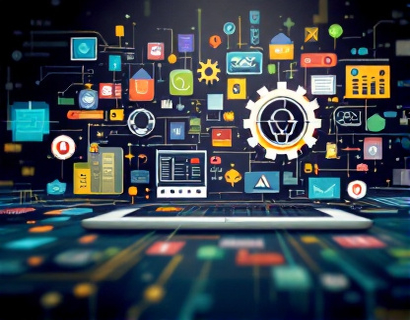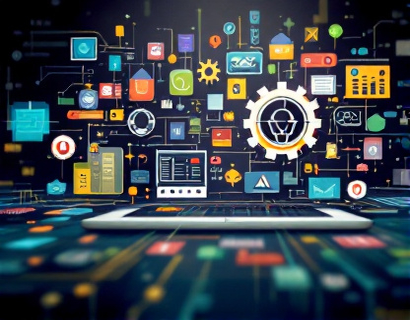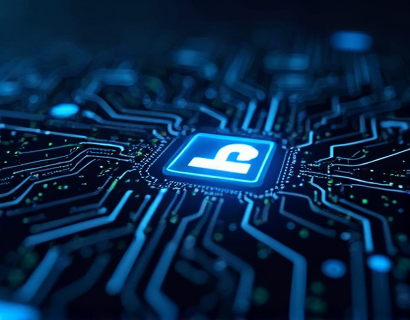Seamless AI and Blockchain Integration: A Business User's Guide to Digital Transformation Success
The integration of Artificial Intelligence (AI) and blockchain technology represents a pivotal shift in the digital landscape, offering businesses unprecedented opportunities for efficiency, security, and innovation. This guide is designed to provide business leaders with the essential strategies and insights needed to successfully merge these cutting-edge technologies, driving digital transformation and fostering growth in an increasingly competitive environment.
To begin, it's crucial to understand the individual capabilities and potential of AI and blockchain. AI, with its advanced algorithms and machine learning capabilities, excels in processing vast amounts of data, identifying patterns, and making predictions or decisions with minimal human intervention. This technology is revolutionizing industries by automating routine tasks, enhancing customer experiences, and driving data-driven decision-making.
Blockchain, on the other hand, is a decentralized ledger technology that ensures transparency, immutability, and security in transactions. By distributing data across a network of computers, blockchain eliminates the need for intermediaries, reduces fraud, and enhances trust among participants. Its applications span from supply chain management to financial services, and beyond.
The synergy between AI and blockchain lies in their complementary strengths. AI can leverage blockchain's secure and transparent data to improve its learning and decision-making processes. Conversely, blockchain can utilize AI to enhance its scalability, security, and usability. When integrated seamlessly, these technologies can unlock new possibilities for businesses, from streamlining operations to creating innovative products and services.
Understanding the Integration Process
Integrating AI and blockchain is a complex but rewarding endeavor. The first step is to identify the specific business needs and objectives that this integration can address. Whether it's enhancing data security, improving operational efficiency, or creating new revenue streams, a clear understanding of the goals is essential.
Once the objectives are defined, the next step involves assessing the current technological infrastructure. This includes evaluating existing AI systems, blockchain networks, and the data ecosystem. Identifying gaps and areas for improvement is crucial for a smooth integration process. It may also involve upgrading hardware, software, or even reorganizing internal processes to support the new technology stack.
Another critical aspect is selecting the right tools and platforms. There are various frameworks and platforms available that facilitate the integration of AI and blockchain. For instance, platforms like Hyperledger and Ethereum offer robust solutions for building blockchain-based systems, while AI frameworks such as TensorFlow and PyTorch provide powerful tools for developing machine learning models. Choosing the right combination of tools that align with the business's technical expertise and requirements is vital.
Enhancing Data Security and Privacy
One of the most significant benefits of integrating AI and blockchain is the enhancement of data security and privacy. Blockchain's inherent properties, such as immutability and transparency, provide a strong foundation for secure data management. AI can further bolster this by detecting and mitigating potential security threats in real-time.
For example, AI algorithms can monitor blockchain transactions for unusual patterns or anomalies, alerting security teams to potential breaches or fraudulent activities. This proactive approach to security can significantly reduce the risk of data breaches and ensure compliance with regulatory standards. Additionally, AI can help in managing access control and identity verification on the blockchain, ensuring that only authorized users can perform specific actions.
Privacy is another area where AI and blockchain can work together effectively. Techniques like homomorphic encryption and zero-knowledge proofs, when combined with AI, enable data to be processed and analyzed without revealing sensitive information. This is particularly valuable in industries dealing with sensitive data, such as healthcare and finance, where maintaining patient and customer privacy is paramount.
Improving Operational Efficiency
Integrating AI and blockchain can lead to substantial improvements in operational efficiency. AI can automate repetitive and time-consuming tasks, freeing up human resources to focus on more strategic activities. For instance, in supply chain management, AI can optimize inventory levels, predict demand, and automate procurement processes, while blockchain ensures transparent and tamper-proof tracking of goods from origin to destination.
Another area where this integration shines is in contract management. Smart contracts, self-executing contracts with the terms directly written into code, can be powered by AI to automate and enforce contractual obligations. AI can analyze data and conditions, triggering actions when predefined criteria are met, thus reducing the need for manual intervention and speeding up processes.
In the realm of finance, AI-driven analytics combined with blockchain's secure transaction processing can streamline operations, reduce fraud, and lower transaction costs. For example, AI can detect fraudulent transactions in real-time, while blockchain ensures that all financial transactions are recorded accurately and transparently.
Creating New Growth Opportunities
The integration of AI and blockchain opens up new avenues for innovation and growth. Businesses can leverage these technologies to develop novel products and services that meet evolving customer needs. For instance, in the insurance industry, AI can assess risk more accurately using data from various sources, while blockchain can ensure secure and transparent claims processing.
In the realm of digital identity, AI and blockchain can collaborate to create secure and user-controlled identity verification systems. This can revolutionize industries like banking, travel, and e-commerce, where secure identity verification is crucial. By giving users control over their personal data and ensuring its integrity, these systems can build trust and foster adoption.
Moreover, the combination of AI and blockchain can enhance data analytics capabilities. AI can process and analyze large datasets stored on a blockchain, uncovering insights that were previously inaccessible. This can lead to more informed decision-making and the development of data-driven business strategies. For example, in the retail sector, AI can analyze customer behavior data stored on a blockchain to personalize marketing campaigns and improve customer engagement.
Challenges and Considerations
While the benefits are significant, integrating AI and blockchain is not without challenges. One of the primary concerns is the technical complexity involved. Both technologies are advanced and require specialized knowledge to implement effectively. Businesses need to invest in training and hiring skilled professionals or partner with technology providers who can bridge the expertise gap.
Another challenge is the regulatory landscape. As AI and blockchain are relatively new technologies, regulations are still evolving. Businesses must stay informed about local and international regulations to ensure compliance. This may involve working closely with legal experts and regulatory bodies to navigate the complexities of data privacy, security, and governance.
Scalability is another consideration. While blockchain is known for its decentralized nature, it can face scalability issues, especially when handling a high volume of transactions. Integrating AI can help optimize blockchain performance, but businesses need to carefully design their systems to handle growth without compromising on security or efficiency.
Best Practices for Successful Integration
To navigate the challenges and maximize the benefits of integrating AI and blockchain, businesses should follow best practices. First, adopt a phased approach to integration, starting with pilot projects to test and refine the technology before scaling up. This allows for identifying and addressing issues early on, reducing risks and costs.
Collaboration is key. Engaging with a community of developers, researchers, and industry experts can provide valuable insights and support. Participating in open-source projects and contributing to the development of standards and best practices can also accelerate innovation and adoption.
Continuous monitoring and evaluation are essential. Implementing robust monitoring tools to track the performance of AI and blockchain systems ensures that they are meeting the desired objectives. Regularly reviewing and adjusting strategies based on data-driven insights can help businesses stay agile and responsive to changing market conditions.
Lastly, fostering a culture of innovation and experimentation within the organization is crucial. Encouraging employees to explore new ideas and technologies can drive creativity and lead to breakthrough solutions. Providing resources and support for research and development can further enhance the organization's ability to leverage AI and blockchain effectively.
Conclusion
Integrating AI and blockchain represents a transformative opportunity for businesses looking to stay ahead in the digital age. By enhancing data security, improving operational efficiency, and creating new growth opportunities, this integration can drive significant value. While the journey involves challenges, following best practices and staying informed about the latest developments can pave the way for successful digital transformation. Embracing these technologies is not just about keeping up with the competition; it's about redefining the future of business.










































